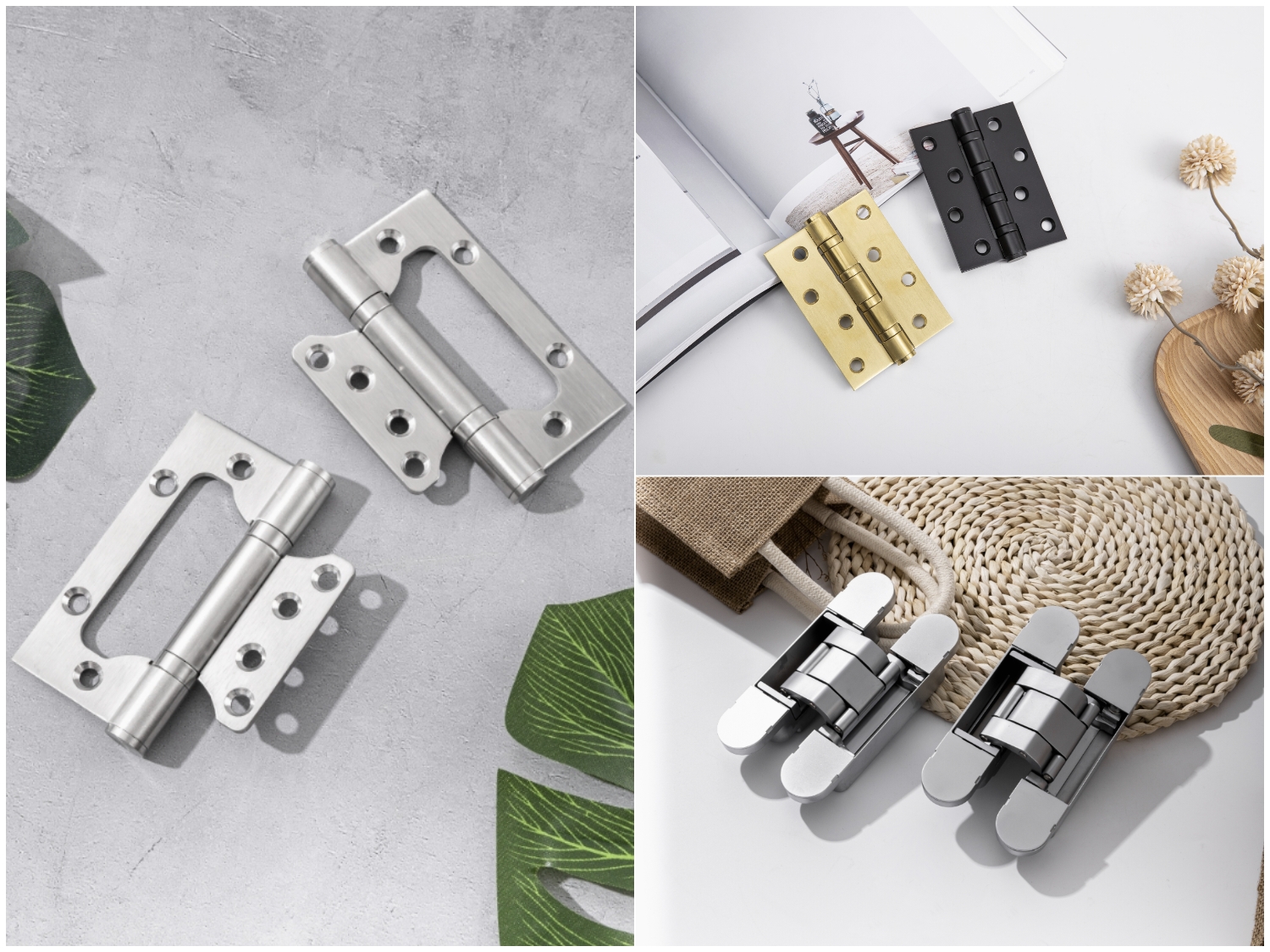The key to whether a door is easy to use is the hinge! If you choose the wrong hinge, the door will sag, make strange noises, or even fall off. Today, IISDOO, which has 17 years of experience in door hardware manufacturing, will reveal the secrets of hinge materials and structures to help you choose the most suitable one.
1.Material Comparison
|
Type |
Stainless Steel |
Iron |
Brass |
Aluminum Alloy |
Zinc Alloy |
|
Advantages |
Saltwater-resistant |
Cost-effective |
Prone to rust |
Lightweight |
Triple-plated |
|
Performance |
96h salt spray test passed |
Prone to rust |
Natural antibacterial |
60% lighter than steel |
Medium-weight |
|
Best For |
Coastal areas, bathrooms |
Temporary installations |
Classic/retro doors |
Modern slim doors |
High-traffic Interior |
In addition to the difference in material, door hinges also have structural differences, such as parent-child hinges and hydraulic hinges, etc.
2.Structural Types
| Type | Standard | Hydraulic | Butterfly | Concealed |
| Feature | Basic function | Silent closing | No mortise needed | Hidden mechanism |
| Noise | Collision sound | Ultra-quiet | Medium sound | Low-noise |
| Installation | Traditional | Professional required | Tool-free | Pre-construction |
3.Purchase Guide
Material: stainless steel for humid areas, copper for retro decoration, zinc alloy and aluminum alloy for modern minimalist decoration
Weight: thickened hinges (3mm or more) are required for solid wood doors, while heavy doors with high frequency of use in hotels, shopping malls, etc. require hinges with a load-bearing capacity of more than 100kg
Post time: Jul-03-2025


